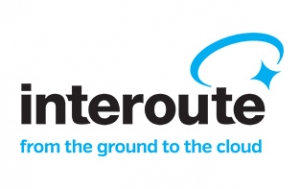
The recent global events such as the Covid Pandemic have led to a significant increase in the adoption of remote work. This shift has brought about a transformation in the way companies approach tech recruitment. The importance of tech recruitment has become even more pronounced in the remote work era, as businesses seek to secure top talent in a competitive landscape.
The Advantages of Remote Work for Tech Recruitment
Remote work offers several advantages for tech recruitment. Firstly, it provides access to a wider talent pool by eliminating geographical barriers. This means that companies can hire top talent from anywhere in the world, leading to a more diverse team. Furthermore, remote work offers greater flexibility for employees, allowing for a better work-life balance, which in turn increases job satisfaction and retention.
The Challenges of Remote Work for Tech Recruitment
Despite the advantages, remote work also poses challenges for tech recruitment. Communication and collaboration can be more difficult in a remote setting, leading to potential miscommunication and misunderstandings. Building team cohesion can also be a challenge when employees are not physically present in the same location. Onboarding and training new hires becomes more complex in a remote work environment, as there is a lack of in-person interaction and integration into company culture. Additionally, maintaining productivity and accountability can be a concern, as remote workers may face distractions and a lack of oversight.
The Evolution of Tech Recruitment Strategies in the Remote Work Era
Given the challenges and opportunities presented by remote work, tech recruitment strategies are evolving to meet the demands of this new era. There is an emphasis on remote-friendly job postings, highlighting the opportunities for remote work in job descriptions and communicating the company's commitment to remote work. Virtual recruitment processes are also being adopted, using video interviews and virtual assessments to adapt traditional recruitment methods for remote settings. Companies are also embracing remote work culture, implementing remote-friendly policies and practices to foster a sense of community and belonging for remote employees.
The Future of Tech Recruitment in a Remote Work World
The long-term impact of remote work on tech recruitment is expected to result in a shift towards remote-first or hybrid work models, as well as changes in candidate expectations and preferences. Technology and tools will play a crucial role in remote recruitment, with digital platforms being leveraged for sourcing and screening candidates, and investment in remote collaboration and communication tools. Furthermore, recruitment strategies will need to be adapted to meet the needs of remote workers, tailoring benefits and perks to remote employees and creating inclusive and equitable remote work environments.
Conclusion
In conclusion, the impact of remote work on tech recruitment is significant, with both advantages and challenges to be addressed. Adaptation and innovation in recruitment strategies is essential in order to thrive in a remote work world, and the future of tech recruitment will be shaped by the dynamic changes brought about by remote working workforce. In addition, remote work also brings cost savings for companies, as it reduces the need for office space and overhead expenses. Remote work can also lead to lower salary expectations from remote workers, further contributing to cost reductions.
About Inspire People
We believe that technology has the power to change the world for the better and we love working with businesses whose technology or purpose has a positive impact. We help businesses that share our vision access the people, resources and strategic advice they need to achieve their digital transformation goals
Our service is designed to accelerate your digital growth. We created our offer in response to emerging challenges in an uncertain business landscape: a blend of Advisory, Talent and Project led services that will help you achieve your strategic aims and deliver more for your employees and customers. We’ll connect you to rare specialist talent, experts and insight to help you navigate your biggest challenges and remain competitive in a changed world.
Get in touch today to discover how working with us could help you innovate and grow.
Speak to our expert team on +44(0)20 7871 8550 or email hello@inspirepeople.net

As tech talent shortages increase and employees demand more respectful, empathetic employers, you may assume discrimination in the workplace would be diminishing.
While it's true that many organisations are focusing more heavily on diversity, equity, and inclusion, workplace discrimination remains a persistent issue. More than a third of adults in the U.K. feel they've experienced discrimination at work. The issues aren't just limited to gender or race either, but age, background, culture, and more.
Workplace discrimination is illegal in most parts of the world; it places employers at risk of significant fines and legal action. Unfortunately, this doesn't prevent problems from happening. That's why tech employees need to know their rights.
Here's your guide to dealing with discrimination in the workplace.
Step 1: Know Your Rights – Defining Discrimination
Discrimination isn't always obvious. Sometimes, we overlook it completely. For instance, the HMRC found the gender pay gap increased by 2.9% in 2021, and many women still don't feel comfortable requesting a raise. Understanding how to recognise discrimination is crucial to ensuring you can fight for your rights.
Remember, discrimination can include:
• Direct discrimination: When someone is treated less favourably than others based on a characteristic such as gender, sexual identity, race, or age.
• Indirect discrimination: Where rules are implemented in a tech business intended for everyone, putting some people at a disadvantage. For instance, a rule that employees might have to travel worldwide at a moment's notice would discriminate against people with health issues or young children.
• Harassment: Verbal or physical abuse towards a person based on protected characteristics like race or gender. This includes sexual harassment, as well as racial profiling.
• Victimisation: When someone is treated unfairly after complaining about evidence of discrimination. For instance, you might be denied a promotion because you reported being harassed by a co-worker.
Step 2: Keep a Record of Incidents
Fighting back against workplace discrimination is easier when you have evidence. Although collecting this can be difficult, particularly when discriminatory interactions are verbal, keeping a record of every incident is crucial.
At the very least, it's worth keeping a journal or diary of everything that happens. Write down the statements said or what occurred and which people were responsible.
Include dates and times when the incidents occurred and as much detail as possible.
If there were witnesses to the event, list their names and consider whether you can ask them to share insights on your behalf.
Step 3: Raise the Problem Informally
Often, it's best to approach an issue of harassment or discrimination informally before you move on to further steps. Sometimes, your tech managers or business leaders can address the problem for you, saving you a lot of time and stress.
Determine who you should approach about the issue. If you have an H.R. team that deals with workplace conflicts, making an appointment for a meeting would be the first logical step. If you believe your manager can help with the issue, approach them first.
Present your concern with the evidence you've collected. Discuss your needs with the other person, and ensure they know you're prepared to take the issue further if necessary.
Step 4: Prepare to Raise the Problem Formally
If your H.R. team or manager can't address the issue for you, or the solution they suggest doesn't have the right results, you may need to be prepared to take extra steps.
Speaking to a lawyer or attorney may be a good idea here, as they can provide direction on presenting your case.
An experienced employment lawyer should be able to help you navigate the courts and find the best way to reach a settlement with your employer. They'll also assist with the more complex components of taking a discrimination case to the courts.
Step 5: Know What to Do Next
Remember, being treated poorly after you raise an issue with workplace discrimination is also its own form of discrimination and should not be permitted. If the issue is successfully rectified, you should be able to go back to your tech role without facing any additional problems.
However, if you notice the attitude towards you has changed, or you're being overlooked for promotions and opportunities, you may need to address the issue again.
If you feel uncomfortable in the workplace after the incident has been addressed, you might consider switching to a new job. Starting fresh could be a good way to ensure you can seek out the best company culture. If you want to move into a new role, consider working with a tech recruitment company that can help you find the best opportunities.
Don't Accept Discrimination
Raising issues in the workplace about discrimination or harassment can sound like a daunting prospect. Most of us prefer to avoid conflict whenever possible. However, it's important to remember that you have the right to work in a tech environment where you feel respected, appreciated, and comfortable.
You might even find that speaking up about discrimination helps inspire others in your workplace to walk the same path.
Though navigating a case of discrimination can be tricky, ensuring you can enjoy your career without fear is important.
About Inspire People
We believe that technology has the power to change the world for the better and we love working with businesses whose technology or purpose has a positive impact. We help businesses that share our vision access the people, resources and strategic advice they need to achieve their digital transformation goals
Our service is designed to accelerate your digital growth. We created our offer in response to emerging challenges in an uncertain business landscape: a blend of Advisory, Talent and Project led services that will help you achieve your strategic aims and deliver more for your employees and customers. We’ll connect you to rare specialist talent, experts and insight to help you navigate your biggest challenges and remain competitive in a changed world.
Get in touch today to discover how working with us could help you innovate and grow.
Speak to our expert team on +44(0)20 7871 8550 or email hello@inspirepeople.net

As talent shortages continue to plague the tech landscape, it's easy to assume the best way of increasing your candidate pool is to work with multiple recruitment teams.
Many business leaders assume more recruiters means more qualified professionals to choose from. However, the reality is, working exclusively with a recruiter is far more effective and less risky.
Building a long-term relationship with a specialist recruitment agency that understands your company, talent needs, and culture paves the way to faster, more cost-effective hiring.
Here's everything you need to know about the benefits of pursuing an exclusive recruitment partnership for your tech company.
The Benefits of Exclusive Recruiter Partnerships
Vacancies in the tech industry are increasing exponentially as companies continue to evolve and talent becomes progressively scarcer.
Working with a specialist recruiter in your industry is one of the best ways to ensure you can accelerate your hiring process and find more of the right candidates. Creating an exclusive partnership with a recruiter means you can leverage the skills and expertise of a company committed to finding the right people for your roles.
Exclusive partnerships deliver:
• Greater efficiency: Speed is crucial for finding employees in a skills-short marketplace. A single recruiter means you only have one agency; you must provide the details of your job description, employee value proposition and culture. Additionally, your exclusive recruiter will commit to giving your brand their full attention, making you more likely to receive several pre-vetted candidates quickly.
• Better communication: As a business leader or hiring manager, you only have a limited amount of time to interact with recruiters. An exclusive recruiter gives you only one point of contact to worry about. You can build a rapport with your company over time and communicate more effectively about your needs and expectations.
• More relevant candidates: Because the communication between you and your exclusive tech recruiter will be improved, it will be easier for you to convey what you need from each candidate. Your recruiter will learn about your company and your talent needs so that they can pinpoint the best professionals for your team. You'll have fewer irrelevant C.V.s/Resumes to work through and receive higher-quality submissions.
• Time savings: Working with multiple recruiters requires a lot of additional work to manage. You'll need to sort through more applications, communicate with a higher number of people, and host more meetings. A single recruiter can commit to delivering excellent results with minimal demands on your time, so you can focus on growing your business and ensuring your existing team thrives.
• Preserved branding: Working with different recruitment agencies could mean each company presents the key aspects of your employer brand and employee value proposition differently. This can damage your reputation over time, confusing potential candidates and making it harder to attract the needed talent. A single recruiter will ensure the message you send your would-be employees remains consistent.
The Importance of Trust and Long-Term Partnerships
Not only does working with an exclusive tech recruiter improve your chances of quickly finding relevant candidates for your roles, but it can also deliver several other crucial benefits. When you commit to working exclusively with a recruiter, you tell them you depend on their service to grow your brand and invest in their expertise completely.
In turn, your exclusive tech recruitment company will commit to delivering the results you need so that they can preserve the mutually-beneficial relationship for as long as possible. If your recruiter knows they're competing with other companies to deliver candidates to your business, they're less likely to prioritise your needs over other clients.
If you're working exclusively with a tech recruiter, they know they must consistently prove their value to your company. They'll spend more time planning, screening, and interviewing candidates to ensure you get the right results. They'll also dedicate more time to collaborating with you and understanding your company's requirements.
This long-term business relationship will deliver compounding benefits over time as your recruiter learns more about your company culture and discovers new ways to find the talent you need.
As a bonus, you'll be able to avoid having to reiterate your hiring process to different agencies constantly.
The Risks of Working with Multiple Recruitment Companies
While working with a tech recruitment company can be a fantastic way to improve your hiring process, interacting with too many recruiters at once can lead to several challenges. Not only do you miss out on the trusting, long-term relationship you get with an exclusive recruitment partner, but you could find yourself dealing with challenges such as:
1. Increased Time
You may also need to invest more time sorting through applications, as you could end up with duplicate applications from the same candidate delivered by different recruitment companies.
Your disparate recruitment teams could waste time trying to screen the same employee twice, searching the same environments for passive and active candidates, and even posting your job descriptions on the same platforms and forums.
2. Miscommunication and confusion
Committing to a long-term relationship with an exclusive tech recruitment partner means collaborating consistently with the same team of professionals. Your recruitment team will work with you to understand exactly what you need from your candidates and how you want to portray your company and brand to potential employees.
On the other hand, if you're working with multiple recruiters, there's a chance that each agency could perceive your business and employer brand differently. This could lead to confusion among candidates, who see a different image of your business presented by each recruiter.
3. Risk of lost candidates
While many business leaders assume working with multiple recruiters will give them access to more tech candidates, the opposite may be true. You may lose access to crucial talent because your recruitment teams are wasting too much time on duplicated efforts rather than delivering an exceptional candidate experience.
Additionally, if your recruitment teams prioritise other tech companies over yours, they may present the same candidates to other employers due to the lack of an exclusive relationship. This could mean competing offers drive the right talent away from your team.
Choose Quality over Quantity
Ultimately, using multiple tech recruiters to fill the gaps in your talent pool might seem like a good idea at first, but it can create a range of challenges. From wasted time and money to reduced access to top talent, multiple recruiters can complicate your hiring process.
Working with an exclusive recruiter is the best way to ensure you can find the right talent for your vacant roles, with excellent communication, mutual trust, and lower costs.
About Inspire People
We believe that technology has the power to change the world for the better and we love working with businesses whose technology or purpose has a positive impact. We help businesses that share our vision access the people, resources and strategic advice they need to achieve their digital transformation goals
Our service is designed to accelerate your digital growth. We created our offer in response to emerging challenges in an uncertain business landscape: a blend of Advisory, Talent and Project led services that will help you achieve your strategic aims and deliver more for your employees and customers. We’ll connect you to rare specialist talent, experts and insight to help you navigate your biggest challenges and remain competitive in a changed world.
Get in touch today to discover how working with us could help you innovate and grow.
Speak to our expert team on +44(0)20 7871 8550 or email hello@inspirepeople.net

The technology landscape is evolving. Attracting, retaining, and empowering talented employees in today’s world requires business leaders to think about more than just buying the right technology or offering a competitive salary. There’s a growing focus on diversity, equity, and inclusion initiatives, designed to ensure every employee can thrive in any workplace.
In recent years, many companies have begun investing more heavily in DEI initiatives, working with tech recruiters to connect with talent from a range of industries and environments.
However, there’s still a portion of the growing workforce that’s often overlooked.
Though the government is encouraging people over the age of 50 to transition back into the workplace, many technology organisations still don’t accommodate the needs of older employees. With age comes new challenges, one of the most common of which for women is menopause.
Approximately 75 to 80% of all women at menopausal age are still at work according to one study. Yet few organisations have specific policies and strategies in place to assist menopausal individuals in managing their symptoms, both physical and mental.
In an age of significant skill shortages and workplace transformation, companies can’t afford to overlook the benefits of making their environment welcoming and accessible to all employees, including those of menopausal age.
Menopause: What Every Technology Manager Needs to Know
Menopause is a completely natural occurrence, which happens after a woman has her last period. Usually, it takes place between the ages of 45 and 55. However, some people will experience menopause earlier than most, as a result of surgery, medical conditions, and other factors.
Menopause and perimenopause symptoms can have a significant impact on a person’s life, influencing their mood, cognition, and overall wellness. Common issues like hot flashes, caused by a decrease in oestrogen levels, can prompt migraines, anxiety, irregular body temperature, and more. Around 75% of women experience physical issues during menopause.
Notably, while most studies and reports on menopause symptoms and experiences focus on women, it’s worth noting it can be a far more wide-ranging issue. Men can be affected by “male menopause”, known as andropause. Additionally, menopause can also influence the quality of life of non-binary, and trans, people.
Menopause Symptoms
While Menopause is a common and natural occurrence in many people’s lives, it’s also something still not fully understood in the scientific world. Every individual can experience the process differently. Some may treat symptoms with hormone replacement therapy, while others rely largely on lifestyle changes to ease discomfort.
The symptoms of this transition can influence people on both a physical and psychological level and common issues include:
• Hot flashes or hot flushes
• Irregular periods
• Night sweats and insomnia
• Headaches or migraines
• Weight gain
• Mood changes (anger, depression, and anxiety)
• Joint stiffness and mobility issues
• Memory problems or loss of concentration
In women, the decrease of oestrogen associated with the menopause can also lead to a higher risk of other health issues, including heart attacks, stroke, and osteoporosis.
How Can Menopause Impact an Employee’s Work?
Technology managers need to be aware of the issues linked to the menopause, because it can have a significant impact on a person’s performance in the workplace.
Additionally, it’s worth noting the number of menopausal individuals in the workforce is growing. Currently, menopausal women are one of the fastest-growing workforcedemographics in a recent UK government report.
Sometimes, menopause will have very little impact on a person, aside from the occasional hot flush or moment of “brain fog”. However, the transitional period can have a significant impact on a person’s productivity, concentration, and performance levels.
Employees experiencing menopause may be more withdrawn in the workplace or may feel embarrassed dealing with regular sweating and hot flushes around other staff members.
Studies have even found that one in 10 women have quit work completely because of menopause symptoms that became unbearable.
Side effects of menopause can also make it harder for employees to work safely in any environment. They may need more support than other employees from time to time, may struggle to focus during certain episodes, and could even need to make changes to their working environment.
What Can a Technology Manager do to Support Menopausal Employees?
As a tech manager, you can take steps to make the workplace a more welcoming and comfortable place for individuals experiencing menopause. Making changes to your company culture, policies, and approach to dealing with menopausal staff can mean they’ll be more likely to stick with your business for longer.
1. Provide Guidance and Information
First, to truly support tech staff members going through the menopause, business leaders need to adjust their approach to discussing the topic. Many women don’t immediately recognise that they’re going through menopause, because it’s often something people don’t discuss.
Putting the information out there for employees to access, via a knowledgebase or intranet is an excellent way to educate and support your staff members. Ensuring employees know who they can talk to when they’re experiencing changes in their health can also make your workplace a more comfortable, and inclusive environment for every employee.
2. Train Managers and Supervisors
Managers and supervisors should be able to offer support, empathy, and guidance to tech employees dealing with menopause symptoms. Business leaders can assist in making the workplace a more welcoming environment, by training managers to listen sensitively to employee issues and respond accordingly to requests.
Employers should train all team leaders to ensure they know how menopause can affect individuals in the workplace, and what support and guidance the organisation can offer. Managers and supervisors should also know how to deal with menopause issues sensitively and fairly. They should be able to work with each employee to customise their workflow to their needs.
3. Conduct Health and Safety Checks
Many people are unaware Menopause can impact the safety of employees in the workplace. By law, tech employers are responsible for preserving the health and safety of all of their staff – including those working from home. As such, business leaders should be prepared to conduct risk assessments of their staff’s workplace and working processes.
For staff going through menopause, it’s important to ensure symptoms aren’t worsened by work practices or the workplace itself. Risk assessments could include examining the temperature and ventilation of the workplace, the material of the employee’s uniform, and their access to toilets and suitable rest locations.
Risk and safety assessments should be regularly reviewed to ensure the workplace remains healthy and supportive for all employees.
4. Find Practical Solutions to Issues
Since all technology employees can experience menopause differently, the best way to address the issues each team member is facing is with a dedicated discussion.
Managers and other business leaders should sit down with employees and discuss their most concerning symptoms. Together, they can come up with practical solutions to common problems.
For instance, it might be necessary to provide employees with new, more breathable uniforms to help with hot flushes or ensure they always have access to cold water and ventilation. For some staff members, it may be a good idea to consider more flexible working hours or remote and hybrid working strategies.
5. Develop Policies
To ensure staff feels fully supported in an technology environment, managers and business leaders should ensure policies are in place related to menopause. These policies should be shared throughout the entire organisation and be regularly reviewed and updated.
The policies you develop may vary, but they should highlight insights into how managers should deal with employees experiencing menopausal symptoms, and how they can offer support. The policies could also outline who will be responsible for ensuring the safety of employees dealing with menopausal symptoms.
Crucially, managers should also plan how to handle time-off requests, and absences caused by menopause. For instance, employees may need to adjust their hours from time to time to ensure they can go to appointments and get the right treatment for their symptoms.
6. Create Menopause and Wellbeing Champions
As demand for wellbeing in the workplace continues to grow, creating champions and individuals responsible for assisting others in protecting their physical and psychological health could be extremely helpful. Having a wellbeing champion at work, with in-depth knowledge of the menopause and its symptoms ensures staff has someone to reach out to when they’re encountering problems caused by menopause.
With support from these technology champions, employers, HR, and managers can run workshops to raise awareness, monitor health and safety risks, and even set up a support network for staff affected by the menopause transition.
How Can You Attract and Retain Valuable Talent?
Research in the current employment landscape indicates that menopausal symptoms have forced countless employees out of the workforce. People suffering from the menopause have delayed applying for promotions, and even avoided going back to work later in life.
In a skills-short tech environment, creating a workplace that’s supportive and comfortable for people experiencing menopause can be extremely beneficial. It ensures business leaders can access a wider range of talented professionals, and improve their reputation.
Attracting and retaining valuable talent in the aging workforce will require business leaders to:
• Rethink company policies: Allowing for flexible working, remote working, and other forms of employment will ensure menopausal individuals can manage their careers around their symptoms, without having to leave the workplace.
• Improve company culture: A company culture that’s supportive, open, and inclusive will ensure every member of staff feels respected and cared for, regardless of their physical or psychological symptoms.
• Listen to staff members: Employers and business leaders will need to listen more carefully to the issues staff members are facing during menopause, and look for new ways to improve their working experiences.
Working with a specialist technology recruitment professional will also ensure business leaders can create job opportunities that are attractive to people from all backgrounds, and of all ages. A recruitment expert will ensure job descriptions and new opportunities are designed with the needs of menopausal employees in mind. They can also help to promote your company’s roles to a wider range of diverse individuals.
About Inspire People
We believe that technology has the power to change the world for the better and we love working with businesses whose technology or purpose has a positive impact. We help businesses that share our vision access the people, resources and strategic advice they need to achieve their digital transformation goals
Our service is designed to accelerate your digital growth. We created our offer in response to emerging challenges in an uncertain business landscape: a blend of Advisory, Talent and Project led services that will help you achieve your strategic aims and deliver more for your employees and customers. We’ll connect you to rare specialist talent, experts and insight to help you navigate your biggest challenges and remain competitive in a changed world.
Get in touch today to discover how working with us could help you innovate and grow.
Speak to our expert team on +44(0)20 7871 8550 or email hello@inspirepeople.net
A "Leader" in the Gartner "Magic Quadrant" for Cloud Enabled Managed Hosting, Interoute provides a full-service Unified ICT platform to international Enterprises, major Telecoms Service Providers, global internet giants and Governments.
LinkedIn is the largest B2B (business to business) social network in the western world. Current data reveals that there are now over 500 million members across the globe.
Microsoft’s purchase of LinkedIn in 2016 will mean that this business platform continues to grow as the online business network of choice.
The amount of data and profiles currently uploaded on LinkedIn enables the platform to function as a search engine.
Are You Appearing On Google?
Did you know that a well-written LinkedIn profile is likely to be one of the first few links that appear when someone Google’s your name?
The question is if your LinkedIn profile can be found online like this; does it communicate what you want to a future employer?
There are some key points to know when working on your individual profile that is currently working when it comes to a compelling profile that gets first and second interviews that we share below.
Your Profile Picture
Though it might be fun to share a piece of code, cartoon character, or a portion of a DNA helix, it doesn't profile you as the professional your new company wants to hire; it’s backed up by LinkedIn’s own research data too.
Did you know that LinkedIn profiles with a photograph get 14 times more views and adding a profile picture makes you 36 times more likely to receive a message on LinkedIn?
There is no excuse for a poor picture with today’s smartphone technology either. A head and shoulders photograph in professional dress works well. Stay away from whacky selfies; keep those for Facebook and Snapchat.
Fill It Out In Full
Earlier I mentioned how certain profiles appear high up on the search rankings. The more you add to your profile the better this works. The upside is it signals to your future new employer that you have attention to detail too.
If you are open to an approach ensure that your mobile number is easily visible in more than one place on your profile.
Remember LinkedIn has the functionality to add videos, PowerPoints and articles. This will enable you to stand out from the crowd. If you have delivered certain projects or have a string of research papers to your name add these to your profile; because they will get read.
Your Summary Is Key
After Your Image, this is the next area that can make or break your chances of career advancement with a new company.
The summary is the most important part of any LinkedIn profile, as most specialist recruiters or hiring managers will not read any further unless you give them a convincing reason why they should
Firstly, given that many of your industry peers are equally qualified and experienced ensure that your summary demonstrates how you can solve your new company’s challenges; this different stance will make you stand out from the crowd who only list their latest qualifications or the fact they are a Linux Administrator or have DevOps expertise.
Your summary should concisely highlight your career achievements that you know will appeal to a future employer.
Finally, remember that many other candidates will have a similar educational and professional profile, so you need to find a way to stand out. LinkedIn allows you to create a powerful impression with an engaging summary, an excellent photo, and a visual LinkedIn profile featuring different multimedia examples of your work.
LinkedIn isn’t just for when you are job seeking. Because it’s a networking tool and a publishing platform, LinkedIn is the ideal way to build your connections, get involved, and stay up to date with events and developments in your industry.
In short, this professional networking platform is vital to your industry career from the first day and beyond.
About Inspire People
We believe that technology has the power to change the world for the better and we love working with businesses whose technology or purpose has a positive impact. We help businesses that share our vision access the people, resources and strategic advice they need to achieve their digital transformation goals
Our service is designed to accelerate your digital growth. We created our offer in response to emerging challenges in an uncertain business landscape: a blend of Advisory, Talent and Project led services that will help you achieve your strategic aims and deliver more for your employees and customers. We’ll connect you to rare specialist talent, experts and insight to help you navigate your biggest challenges and remain competitive in a changed world.
Get in touch today to discover how working with us could help you innovate and grow.
Speak to our expert team on +44(0)20 7871 8550 or email hello@inspirepeople.net










